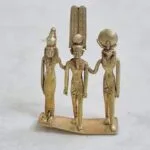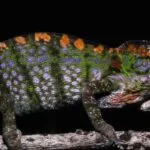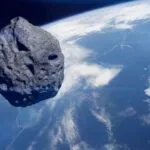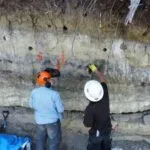Ghosts Exist One challenge in scientifically determining whether ghosts are real lies in the surprisingly diverse range of phenomena people associate with them.
Headlines
Haunted Truth or Fiction: Do Ghosts Exist?

If you believe in ghosts, you’re far from alone. Across the globe, countless cultures share the belief in spirits that linger after death, existing in a realm beyond our own. Ghosts are among the most widely accepted paranormal phenomena, captivating millions worldwide. But it’s more than just a fascination with spooky stories. A 2019 Ipsos poll revealed that nearly half of Americans—46%—genuinely believe in ghosts. Interestingly, the belief in other supernatural beings, like vampires, is far less common, with only 7% of respondents admitting they believe in them.
Even more striking, about 18% of people say they’ve either seen a ghost or felt its presence, according to a 2015 Pew Research study. What could explain these eerie encounters?
Hupp, who also edits Skeptical Inquirer magazine Ghosts Exist, specializes in examining paranormal claims through a critical lens. His work, alongside others in the field, explores why humanity has long held such a strong belief in spirits.
The idea that the dead remain among us in some form is deeply rooted in history, appearing in everything from ancient texts like the Bible to Shakespeare’s Macbeth. It has even inspired an entire folklore genre: ghost stories. These beliefs often offer comfort, allowing people to imagine their lost loved ones watching over them or standing by their side in times of need.
For centuries, humans have sought ways to communicate with the spirits. Victorian England, for example, saw an explosion of séances, where well-to-do women hosted spiritual gatherings after tea and crumpets. Universities like Cambridge and Oxford even formed ghost clubs to search for evidence of the paranormal, and the Society for Psychical Research was established in 1882. Eleanor Sidgwick, one of the group’s most prominent investigators (and later its president), could easily be considered the first female ghostbuster.
In America during the late 19th century, psychic mediums claimed to bridge the gap between the living and the dead. However, many were later exposed as frauds by skeptics like Ghosts Exist Harry Houdini.
In modern times, ghost hunting has become a global phenomenon, largely thanks to TV shows like Ghost Hunters, which aired 230 episodes. Despite its popularity, the show—and others like it—failed to produce convincing evidence of ghosts.
Still, the allure of the paranormal endures. Whether it’s ancient folklore, personal experiences, or pop culture, the question remains: Are ghosts real, or are they simply reflections of our imagination?

Most people believe in ghosts because of personal experience. Scientific arguments for ghosts, however, always fall flat. (Image credit: urbazon/Getty)
If you believe in ghosts, you’re not alone. Cultures all around the Ghosts Exist world believe in spirits that survive death to live in another realm. In fact, ghosts are among the most widely believed of paranormal phenomenon: Millions of people are interested in ghosts. It’s more than mere entertainment; A 2019 Ipsos poll found that 46% of Americans say they truly believe in ghosts. (The nation is discerning in its undead beliefs; only 7% of respondents said they believe in vampires).
And about 18% of people say they have either seen a ghost or been in one’s presence, according to a 2015 Pew Research study. Why do so many claim to have such brushes with the afterlife?
“One common cause may be pareidolia, the tendency for our brains to find patterns (especially human faces and figures) amongst ambiguous stimuli,” Stephen Hupp, clinical psychologist and professor at Southern Illinois University Edwardsville, Told Live Science in an email. “One common example is when we see faces or figures in the clouds and another is when random shapes and shadows in a dark house look like a ghost,” said Hupp, who is also the editor of Skeptical Inquirer magazine.
Stephen Hupp is the editor of “Skeptical Inquirer” magazine. He is also a clinical psychologist and a professor of psychology at Southern Illinois University Edwardsville (SIUE). He has published several books including “Pseudoscience in Therapy“ (Cambridge University Press, 2023) and “Investigating Pop Psychology” (Routledge, 2022).
But the idea that the dead remain with us in spirit is an ancient one, appearing in countless stories, from the Bible to “Macbeth.” It even spawned a folklore genre: ghost stories. Belief in ghosts is part of a larger web of related paranormal beliefs, including near-death experience, life after death, and spirit communication. The belief offers many people comfort — who doesn’t want to believe that our beloved but deceased family members aren’t looking out for us, or with us in our times of need?
People have tried to (or claimed to) communicate with spirits for ages; in Victorian England, for example, it was fashionable for upper-crust ladies to hold séances in their parlors after tea and crumpets with friends. Ghost clubs dedicated to searching for ghostly evidence formed at prestigious universities, including Cambridge and Oxford, and in 1882 the most prominent organization, the Society for Psychical Research, was established. A woman named Eleanor Sidgwick was an investigator (and later president) of that group, and could be considered the original female ghostbuster. In America during the late 1800s, many psychic mediums claimed to speak to the dead — but were later exposed as frauds by skeptical investigators such as Harry Houdini.
It wasn’t until recently that ghost hunting became a widespread interest around the world. Much of this is due to the hit Syfy cable TV series “Ghost Hunters,” which aired 230 episodes and found no good evidence for ghosts.
The success of shows like Ghost Hunters sparked countless spinoffs and imitators, and it’s easy to see the appeal: anyone can go looking for ghosts. The show’s original stars weren’t scientists—they were plumbers who decided to seek evidence of the paranormal. Their message was clear: you don’t need advanced training or fancy credentials to become a ghost hunter. All you need is some spare time, a dark space, and perhaps a few gadgets from your local electronics store. With vague criteria like “unexplained lights” or “odd noises,” almost anything could be labeled evidence of the supernatural.
This broad and subjective approach is one reason myths about the afterlife continue to thrive.
The Science and Logic of Ghosts
One challenge in scientifically evaluating ghosts is the sheer variety of phenomena attributed to them. Reports range from doors mysteriously closing, to objects vanishing, to cold spots in hallways, to vivid encounters with apparitions of deceased loved ones.
Sociologists Dennis and Michele Waskul explored this in their book Ghostly Encounters: The Hauntings of Everyday Life (2016). They found that many people claiming ghostly experiences weren’t entirely convinced themselves. “Our participants often described their experiences as uncanny or extraordinary rather than definitively ghostly,” they wrote. In essence, these experiences were mysterious but didn’t always align with conventional ideas of what a “ghost” should look like.
Psychologist Stephen Hupp points out that misunderstood natural phenomena often play a role in these encounters. For instance, sleep paralysis—a condition where a person feels awake but unable to move—can trigger vivid sensations of ghostly or demonic presences. “This experience can feel incredibly real, leading people to believe they’ve encountered a spirit,” Hupp explained.
Defining Ghosts (or Not)
The lack of a clear definition further complicates scientific study. Are ghosts spirits of the dead, lost on their way to the afterlife? Are they telepathic projections from the living mind? Or are they something else entirely?
Some believers even categorize ghosts into types: poltergeists, residual hauntings, shadow people, and intelligent spirits. But as Hupp notes, this is no different from speculating about different races of fairies or dragons—it’s all imagination.
Ghost stories also present logical contradictions. For example, are ghosts material or immaterial? They’re often said to pass through walls but also reportedly slam doors or throw objects. If ghosts are human spirits, why do they appear clothed or accompanied by inanimate objects like hats and canes? And why are there still unsolved murders if ghosts can supposedly communicate with mediums and identify their killers?
Tools of the Trade
Ghost hunters frequently claim to be scientific, using equipment like EMF detectors, infrared cameras, and sensitive microphones. However, none of these devices have been proven to detect ghosts. As Hupp wryly noted, “If someone hands you a gadget to sense a ghost, they’re probably just after your money.”
In the past, people believed flames turned blue in a ghost’s presence. Today, such myths have been replaced by modern gadgets, but they may one day be dismissed as equally outdated.
Some argue that we lack the right technology to detect ghosts. Yet, if ghosts exist in the physical world, they should leave verifiable evidence—photos, videos, or recordings. The absence of such proof raises doubts.
Meanwhile, smartphone “ghost apps” allow users to create convincing supernatural images, further muddying the waters for researchers.
Why Do People Believe in Ghosts?
For many, belief in ghosts stems from personal experience. Perhaps they grew up in a household where spirits were accepted as real, or they had a chilling moment during a ghost tour.
This belief often fulfills a deeper psychological need. Hupp explains, “There’s so much about the universe we don’t understand, and supernatural explanations provide comfort. People often express these ideas with confidence, even when there’s no evidence to support them, creating a false sense of truth.”
Some even attempt to link ghosts to science, citing the First Law of Thermodynamics: energy cannot be created or destroyed, so where does our energy go when we die? The answer, according to physics, is simple. The body’s energy disperses into the environment as heat and is absorbed by plants, animals, and microbes. There’s no mystical energy lingering as a ghost.
While amateur ghost hunters often see themselves as pioneers on the frontier of paranormal research, their activities are better understood through the lens of folklore. Folklorists refer to this phenomenon as ostension or legend tripping—a form of role-playing where individuals “act out” supernatural legends. In his book Aliens, Ghosts, and Cults: Legends We Live (2003), folklorist Bill Ellis explains that ghost hunters frequently take their quests seriously, venturing out to confront supposed supernatural forces. Ellis notes that this dramatized exploration serves a deeper purpose than mere entertainment: it’s a way to test and define the boundaries of reality itself.
But if ghosts are real—some kind of unknown energy or entity—their existence will be uncovered through rigorous scientific inquiry, not by hobbyists roaming through dark, abandoned buildings armed with flashlights and cameras. Like all scientific discoveries, the truth about ghosts would emerge from controlled experiments and reproducible evidence, not late-night adventures fueled by folklore and imagination.
Despite decades of ghost hunting and countless ambiguous photos, sounds, and videos, the evidence for ghosts remains as flimsy today as it was a century ago. There are two plausible reasons for this:
- Ghosts don’t exist. Reports of ghostly encounters can be explained by psychological phenomena, misperceptions, mistakes, or outright hoaxes.
- Ghosts do exist, but amateur ghost hunters lack the scientific tools and methodologies to find meaningful evidence.
Yet ghost hunting isn’t really about finding proof. If evidence were the true goal, the pursuit might have ended long ago. Instead, ghost hunting is about camaraderie, storytelling, and the thrill of pretending to explore the unknown. It’s an adventure shared with friends and family, a way to indulge in the timeless human love of a good ghost story.






